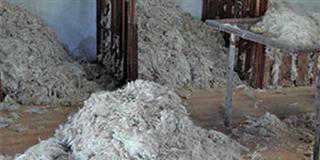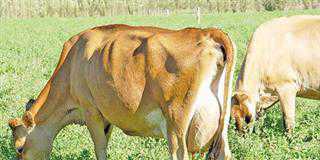A sow will come on heat every 21 days and stay on heat for about two days. Her vulva will swell and she will tend to stand very still (this is called ‘standing heat’). She can then be served by a boar. If she fails to fall pregnant, she must be brought to a boar when next she comes on heat. If she does not conceive after this, she should be slaughtered. Piglets are born 116 days after service. You should de-worm pregnant sows 21 to 28 days before they farrow.
Farrowing
Newborn piglets are highly sensitive to infections and cold. The farrowing pen should therefore be as far away from the other pigs as possible and kept warm, clean and dry (see ‘Important tips’). Remove dirty, wet bedding daily. Wash and scrub the pen after the sow and piglets are removed. Disinfect it and leave it to dry for two days before placing a new pregnant sow in it.
Four days before the piglets are born, wash and disinfect the pregnant sow and place her in the farrowing pen. Gilts (young female pigs) about to farrow for the first time should be put in the farrowing pen for a few hours a day for six days, then for four full days before farrowing.
Prevent sows from becoming constipated during this period by giving them green feed such as lucerne or a high-fibre feed, such as bran. Feed them 1kg of bran when placing them in the farrowing pen for the first time, four days before giving birth.
Be prepared to help with the birth of the piglets, especially if the sow is farrowing for the first time. Watch out for certain behaviour:
- The sow will become restless and start to make a ‘nest’ with the bedding when she’s ready to give birth.
- Her vulva will swell shortly before she gives birth.
- Make sure the newborn piglets don’t become entangled in birth membranes or suffocate in mucus or amniotic fluid.
- Keep the sow calm so she does not trample the piglets to death.
- A newborn piglet will usually break its own umbilical cord. If it is too weak to do this, break the cord yourself using your thumb and forefinger.
During the first week after farrowing:
- Check that the sow is not constipated.
- Ensure that she discharges her afterbirth within two days.
- Watch out for signs of fever – this indicates infection (pig diseases will be discussed in the next issue).
- Look out for milk fever four to six days after farrowing. This is associated with low calcium and the sow will weaken.
- The sow can develop mastitis, resulting in hard, inflamed teats that cannot be suckled and the piglets may die of hunger. It requires immediate attention from a vet.
Important tips
- Lactating sows require a cool environment while newborn pigs need warmth. Try to keep the temperature in the farrowing pen between 16°C and 20°C. If it’s much warmer, the sow will eat less, lose weight and produce less milk, and the piglets will grow slowly.
- The piglets, on the other hand, need a temperature of 28°C to 32°C, so install a box or something similar to allow them to huddle together for warmth.
- Make sure there is plenty of clean water, and give the sow all the food she can eat. She should not lose weight while lactating.
- Inspect the sow’s udder daily for hard lumps; these are signs of infection. If you find any, treat the sow immediately.
- Wean the piglets when they’re four to five weeks old by removing the sow. Move the piglets to another pen a week later.
- A sow will come on heat again three to five days after weaning. Take her to the boar once a day until she is served.
- Sows must receive less feed – about 2kg a day – from the day after weaning.
In the next issue, we’ll take a detailed look at pig diseases.
Record-keeping
Note the following:
- The date the sow is served. This will allow you to work out when she is due to come on heat again if she’s not pregnant. If she does not come on heat 20 to 25 days after service, she is pregnant.
- The expected farrowing date, so that you can bring her to the farrowing pen four days before she is due to give birth.
- The weaning date, so that you can wean the piglets on the right date and the sow can be brought to the boar again for service three days later.
- The age of the sow and how many litters she has had. You can then work out which sows to cull.
- Details of the litter: the number of piglets born alive, the number born dead and the number that die between birth and weaning. This information will help you keep track of fertility and disease.
Sources: Farming with Pigs (Western Cape Department of Agriculture); Guide to Small-Scale Pig Farming by EH Kemm (department of agriculture); SA Pork Producers’ Association (www.sapork.com).













